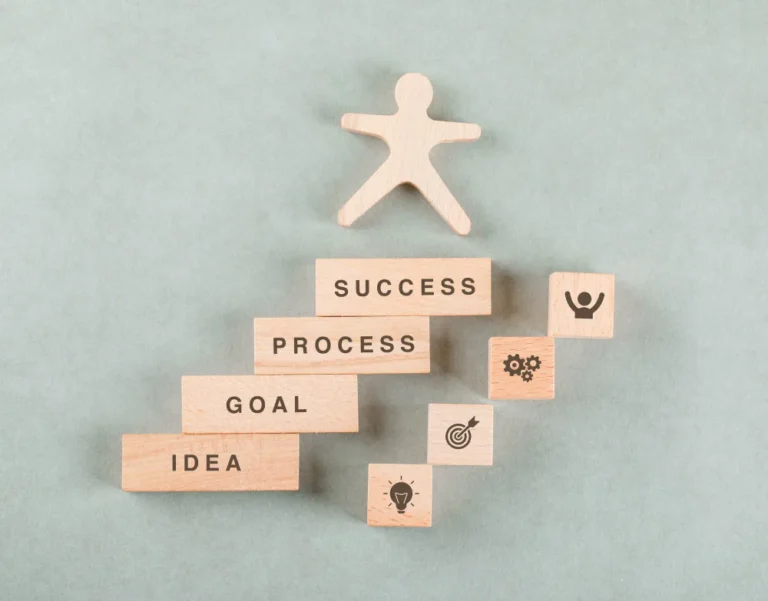15 Rules to Overcome Failures and Achieve Success
Introduction:
Failure is an inevitable part of life’s journey, but how we respond to setbacks can significantly impact our personal and professional growth. In this article, we will explore 15 actionable rules that serve as a guide for dealing with failures, providing detailed insights and real-life examples to illustrate their effectiveness. Understanding and embracing these rules can pave the way for resilience, learning, and ultimate success.
Rule 1: Acknowledge and Accept Failure
The first step in overcoming failure is acknowledging and accepting it. This rule encourages individuals to confront the reality of the situation, understanding that setbacks are a natural part of any journey.
Example: Michael Jordan, widely regarded as one of the greatest basketball players, missed over 9,000 shots in his career. He openly acknowledges his failures, emphasizing that each miss brought him closer to success.
Rule 2: Separate Failure from Your Identity
Failing at a task doesn’t define a person. This rule emphasizes the importance of distinguishing between the outcome of an endeavor and one’s identity, preventing a negative impact on self-worth.
Example: J.K. Rowling faced multiple rejections before the success of the Harry Potter series. She didn’t let the initial failures define her worth as a writer, ultimately becoming one of the most celebrated authors.
Rule 3: Learn and Extract Lessons from Failure
Failures are valuable teachers. This rule encourages individuals to view setbacks as opportunities for learning and growth, extracting lessons that can contribute to future success.
Example: Elon Musk faced challenges with his early ventures, such as Zip2 and X.com. Learning from these experiences, he applied the lessons to later endeavors like PayPal, Tesla, and SpaceX.
Rule 4: Maintain a Growth Mindset
A growth mindset fosters resilience and a belief in one’s ability to improve. This rule encourages individuals to view challenges as opportunities to develop skills and capabilities.
Example: Carol Dweck, a renowned psychologist, emphasizes the power of a growth mindset. Those with this mindset see failures as a chance to learn and improve, contributing to long-term success.
Rule 5: Set realistic expectations.
Setting realistic expectations is crucial to managing disappointments. This rule encourages individuals to evaluate goals and timelines realistically, reducing the likelihood of feeling overwhelmed by perceived failure.
Example: In the tech industry, product launches often face unexpected challenges. Setting realistic expectations for the development process helps companies like Apple manage setbacks and deliver high-quality products.
Rule 6: Don’t Fear Experimentation and Innovation
Failure often accompanies experimentation and innovation. This rule emphasizes the importance of pushing boundaries and taking calculated risks, as these endeavors can lead to groundbreaking achievements.
Example: Thomas Edison’s numerous attempts to invent the light bulb were experimental. His willingness to embrace failure in the pursuit of innovation eventually led to one of the most transformative inventions in history.
Rule 7: Seek constructive feedback.
Constructive feedback is a valuable tool for improvement. This rule encourages individuals to seek feedback from mentors, colleagues, or peers, providing insights that can lead to enhanced performance.
Example: Serena Williams, despite her tennis prowess, consistently seeks feedback from her coaches. Embracing constructive criticism has contributed to her continuous growth and success on the tennis court.
Rule 8: Cultivate Emotional Resilience
Dealing with failure requires emotional resilience. This rule emphasizes the importance of understanding and managing emotions, preventing negative feelings from hindering progress.
Example: Steve Jobs faced rejection and setbacks in his early career. His emotional resilience and determination to pursue his vision led to the creation of Apple and its revolutionary products.
Rule 9: Surround Yourself with a Supportive Network
A supportive network can provide encouragement during challenging times. This rule encourages individuals to lean on friends, family, mentors, or colleagues for emotional support and guidance.
Example: Oprah Winfrey faced personal and professional challenges. Her close-knit support network played a crucial role in helping her navigate setbacks and ultimately achieve unprecedented success.
Rule 10: Focus on What You Can Control
Certain aspects of failure may be beyond control. This rule encourages individuals to focus on what they can control—personal efforts, attitudes, and responses—rather than fixating on external factors.
Example: Warren Buffett, despite market fluctuations, focuses on long-term investment strategies. By concentrating on factors within his control, he has achieved remarkable success in the world of finance.
Rule 11: Visualize Success Amidst Failure
Maintaining a vision of success is vital during challenging times. This rule encourages individuals to visualize their goals and successes, fostering a positive mindset that can counteract the effects of failure.
Example: Walt Disney faced financial setbacks and rejections early in his career. Despite these challenges, he maintained a vivid vision of Disneyland, which eventually became a reality and a global entertainment phenomenon.
Rule 12: Turn Failure Into Motivation
Failure can serve as a powerful motivator. This rule encourages individuals to use setbacks as fuel for increased determination and effort, turning negative experiences into catalysts for future success.
Example: Michael Jordan, after being cut from his high school basketball team, used the experience as motivation to improve his skills. His dedication turned him into an iconic athlete.
Rule 13: Celebrate small wins along the way.
Recognizing small victories is essential for maintaining motivation. This rule encourages individuals to celebrate progress, no matter how incremental, as each step forward contributes to the overall journey.
Example: Marie Curie faced gender-based discrimination in academia. Despite the challenges, she celebrated small victories, such as completing her doctoral degree, which eventually led to groundbreaking scientific discoveries.
Rule 14: Develop Resilience through Continuous Reflection
Reflection is key to building resilience. This rule encourages individuals to reflect on their experiences, identify areas for improvement, and adjust strategies for dealing with challenges in the future.
Example: Nelson Mandela spent 27 years in prison but used that time for self-reflection. His resilience and ability to reflect on his journey contributed to his leadership in ending apartheid in South Africa.
Rule 15: Cultivate a Forward-Looking Perspective
A forward-looking perspective enables individuals to see beyond immediate setbacks. This rule emphasizes the importance of focusing on the future, fostering resilience and determination.
Example: Malala Yousafzai, after surviving an attack by the Taliban, remained forward-looking. Her determination to advocate for education led to global recognition and the Nobel Peace Prize.
Conclusion:
Dealing with failures is an integral part of the human experience. The 15 rules outlined in this article offer actionable strategies for effectively navigating setbacks and turning them into stepping stones for success. By acknowledging failure, learning from experiences, maintaining a growth mindset, and cultivating resilience, individuals can face challenges with determination and resilience, ultimately leading to personal and professional triumphs. SV Enlightenment supports you in applying these strategies to transform failures into opportunities for growth.





